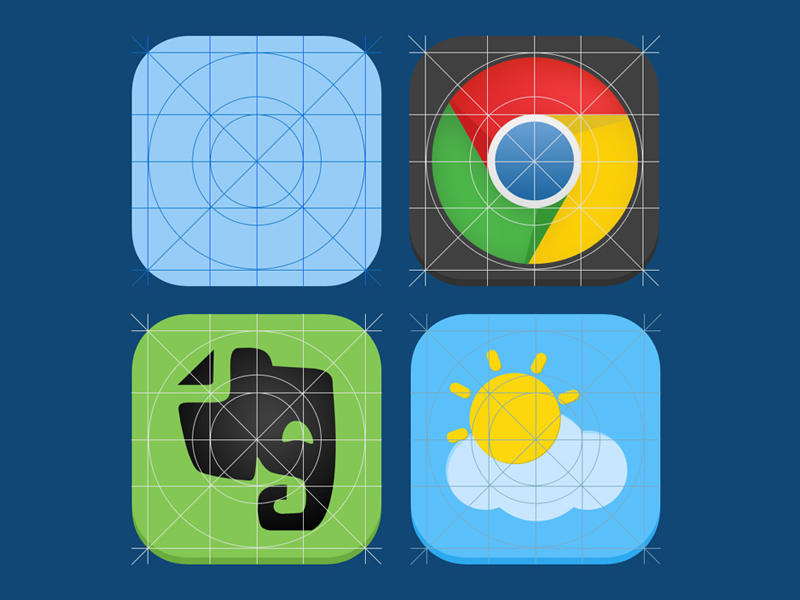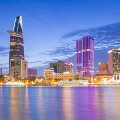Creating Engaging Mobile App Experiences: A User-Centered Design Guide
— April 11, 2024In a world dominated by mobile technology, applications have become indispensable tools woven into the fabric of daily life. These digital tools empower users, offering utility and entertainment, from fostering connections through social media to improving productivity with streamlined solutions. But what elevates an app from being forgettable to becoming an essential part of users’ lives? The answer lies in its design.
This guide explores the principles, practices, and strategies behind effective mobile app design. By focusing on user-centric approaches, you will discover how to create visually appealing and highly functional apps that thrive in a competitive marketplace.
Defining Mobile App Design: The Dual Pillars of Success
Mobile app design thrives on two key pillars: User Interface (UI) Design and User Experience (UX) Design. These elements must seamlessly combine to produce an app that is both attractive and efficient.
UI Design
UI design focuses on the visual components of an app. This includes the layout, color schemes, typography, and imagery. The goal is to create an aesthetic experience that aligns with the brand and captures users’ attention. Every element, from buttons to navigation bars, is meticulously crafted to deliver visual clarity and coherence.

UX Design
UX design ensures that the app meets users’ needs with ease and efficiency. This involves understanding user behavior, anticipating challenges, and creating intuitive navigation paths. A well-designed UX reduces friction, helping users complete tasks without frustration.
The collaboration between UI and UX designers is critical. While UI grabs the user’s attention, UX ensures they stay engaged by delivering a smooth and logical experience. Together, these disciplines form the backbone of an app that is not only visually stunning but also practical.
Core Principles of Effective Mobile App Design
To create an app that resonates with users, certain principles must be at the forefront of the design process.
Simplicity: The best apps prioritize ease of use. By eliminating unnecessary elements, users can focus on their tasks without distractions. Clear layouts and concise content guide users effectively.
Consistency: Maintaining uniformity in design elements, such as fonts, colors, and navigation structures, helps build familiarity. This strengthens brand identity and makes the app easier to navigate.
Feedback: Users should feel acknowledged during interactions. Visual or auditory cues like animations, loading indicators, and success messages create a sense of engagement.
Accessibility: Designing for inclusivity ensures your app is usable by individuals with diverse abilities. Features like high-contrast themes, screen reader support, and alternative text make the app accessible to all.
User-Centered Focus: The app’s primary goal should always be to meet users’ needs. Every design choice must enhance the user’s ability to complete tasks effortlessly.
Best Practices for Mobile App Design

Adhering to established methods for mobile app design significantly improves user satisfaction and functionality. High-quality design focuses on user needs, clear structures, and seamless interaction, ensuring the app remains engaging and easy to use. Whether designing for Android, iOS, or cross-platform applications, these practices enhance usability and promote positive experiences.
Optimizing for Small Screens
Effective mobile app design starts with adapting to limited screen real estate. Smaller displays require a focused approach to avoid overwhelming users. A clean, uncluttered layout is essential for ensuring that users can comfortably navigate through the app. Designers should prioritize the most critical content and features, employing white space strategically to prevent overcrowding.
Intuitive user interface (UI) patterns make interaction seamless. Common gestures, such as swipes, pinches, and taps, should align with platform standards. Users are already familiar with these interactions, making the app feel natural and easy to use. Designers should conduct usability testing to confirm that gestures work as intended across various screen sizes.
Design consistency is another crucial element. Fonts, icons, and spacing should remain uniform throughout the app to maintain a professional appearance. Consistency reinforces brand identity and ensures users do not face unnecessary cognitive strain when switching between app sections.
Simplified and Logical Navigation
Navigation design can make or break the user experience. Simplifying navigation by organizing content into clear hierarchies allows users to find what they need without frustration. Each navigation step should feel intuitive, guiding users effortlessly toward their goals.
Keeping screens focused and uncluttered improves usability. Limiting the number of options on a single screen reduces cognitive load and makes interactions more deliberate. For example, a landing page with prominent action buttons can direct users toward key features without distractions.
Designers should also employ breadcrumbs or progress indicators in multi-step processes to help users understand where they are within the app. This approach reduces confusion and builds confidence, particularly in apps requiring users to complete lengthy tasks, such as booking services or managing finances.
Designing User-Friendly Forms
Forms are often a source of friction for app users, but thoughtful design can make them more approachable. Breaking forms into smaller, manageable steps simplifies the process. A step-by-step approach reduces the perceived effort, increasing the likelihood of completion.
Default selections for common responses can speed up user input. For instance, apps handling e-commerce or delivery services might auto-fill country or city fields based on the user’s location. Predictive text and auto-fill features further reduce input time, minimizing frustration.
Ensuring forms are optimized for mobile devices is critical. Larger touch targets for buttons and fields reduce the chance of input errors. Real-time validation, where errors are flagged as the user types, improves efficiency and prevents the frustration of submitting incomplete forms.
Accessibility for Inclusive Design
Accessibility ensures that apps are usable for all audiences, including individuals with disabilities. Incorporating features like scalable fonts allows users to adjust text size to their preferences. Large tap targets and voice input compatibility further enhance usability for users with mobility challenges.
Testing apps with assistive technologies such as screen readers identifies barriers for visually impaired users. Developers should ensure that labels, descriptions, and button names are readable by these tools. Color contrast also plays a vital role, as it ensures text is legible even under poor lighting conditions.
Building accessible apps not only broadens the potential audience but also aligns with regulatory requirements in many regions. Prioritizing accessibility improves overall design quality, benefiting all users.
Performance Optimization
App performance directly impacts user satisfaction. Slow-loading apps often lead to frustration, resulting in uninstalls or poor reviews. Optimizing performance involves compressing media files, optimizing code, and reducing server response times.
Skeleton screens—lightweight placeholders displayed while content loads—create the perception of faster loading. This keeps users engaged while waiting for data to populate. Caching frequently accessed data also speeds up the app, particularly in regions with slow internet connectivity.
Energy efficiency is another aspect of performance optimization. Apps that consume excessive battery power risk being deleted by users. Developers should minimize background activities and test energy consumption during the development phase.
Platform-Specific Guidelines
Adhering to platform-specific design standards ensures consistency with user expectations. Apple’s Human Interface Guidelines and Google’s Material Design provide frameworks for designing apps that feel natural on their respective platforms. These guidelines cover everything from layout and navigation patterns to typography and interaction feedback.
Following these guidelines enhances the user experience by creating familiarity. For example, iOS users expect smooth transitions and consistent back navigation, while Android users value responsive material components. By aligning with these standards, designers can reduce the learning curve for users.
Cross-platform apps must strike a balance between uniformity and platform-specific customizations. Using frameworks that adapt designs to each operating system ensures the app feels native while retaining core functionality.
Tools for Mobile App Design
Efficient tools streamline the design process, enabling teams to focus on innovation and usability. Figma, a popular choice for collaborative design, allows multiple designers to work simultaneously. Its real-time editing feature simplifies updates and ensures consistency across design elements.
Sketch is another valuable tool, widely favored for its wireframing and prototyping capabilities. Its plugin ecosystem extends functionality, making it adaptable for various design needs. Adobe XD offers similar features, with a focus on creating interactive prototypes that help visualize user journeys.
For more advanced prototyping, Axure RP stands out by enabling designers to create detailed interactions for complex interfaces. InVision complements these tools by facilitating user testing and feedback collection. Its comment system allows stakeholders to share input directly on designs, streamlining revisions.
Utilizing these tools not only improves productivity but also ensures the app meets user expectations and business objectives. Companies outsourcing design to Vietnam-based firms like S3Corp can benefit from these tools, as they enable efficient communication and high-quality outcomes.
The Mobile App Design Process
Designing an app is a step-by-step journey that blends creativity, strategy, and user feedback.
The process begins with understanding user needs. Research helps identify the target audience’s preferences, pain points, and expectations. By analyzing market trends and competitors, designers can pinpoint opportunities for innovation.
Once the purpose of the app is defined, wireframes are created to outline its structure. These low-fidelity designs provide a blueprint for navigation and layout. Prototypes are then developed to simulate the app’s functionality, enabling early feedback collection.
User testing is essential for refining the design. Through usability tests, A/B comparisons, and beta launches, teams can identify areas for improvement. Iterative cycles of feedback and adjustment ensure the app evolves to meet user expectations.
The final phase involves delivering a polished product. Close collaboration between designers, developers, and stakeholders is critical during this stage to ensure that every detail aligns with the original vision.
The Importance of User-Centered Design
Success in mobile app development hinges on prioritizing user needs. A poorly designed app risks alienating users, while a user-friendly experience builds loyalty and engagement.
Apps that emphasize simplicity, accessibility, and responsiveness not only attract users but also retain them. By adopting a user-centered approach and staying adaptable to feedback, your app can remain relevant in a competitive market.
Taking the Next Step
To start creating impactful mobile apps, clearly define the problem your app addresses. Thorough research will provide insights into your audience’s needs and preferences. Use this understanding to craft a design that balances aesthetics with functionality.
Embrace a design thinking mindset by prototyping and testing continuously. Incorporate feedback at every stage to refine the user experience. Stay informed about emerging trends to keep your app innovative and appealing.
By prioritizing accessibility and inclusivity, you ensure your app reaches the widest audience possible. A well-designed app does more than function—it connects with users and delivers lasting value.
In conclusion, mobile app design is both an art and a science. With a focus on user-centered principles and best practices, you can create experiences that resonate deeply with users and ensure your app’s success.








